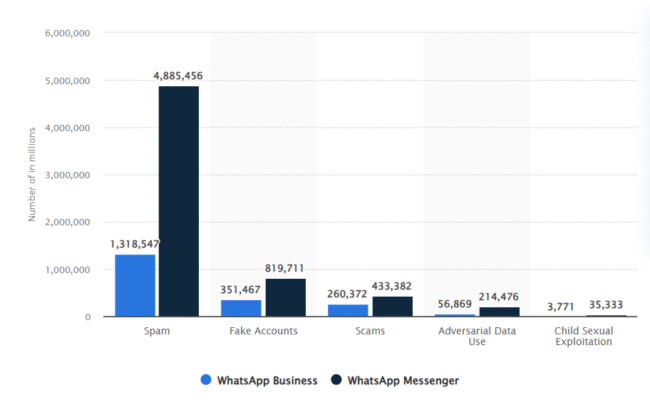Telecom Security – Part 7 of 10 in the series.
In 2025, WhatsApp isn’t just where we talk – it’s where we trust.
Friends, banks, deliveries, even government alerts – they all live in one chat feed.
And that’s exactly why scammers love WhatsApp Fraud.
WhatsApp removed 6.8 million accounts tied to scam operations in just the first half of 2025.
That shows the scale of WhatsApp Fraud, but also the limitation: banning accounts doesn’t stop the real weapon of modern fraudsters: the link.
End-to-end encryption keeps messages private, not safe.
Fraudsters now exploit that privacy to send perfectly crafted phishing links that steal credentials, OTPs, and payment data.
The moment you click, the crime begins.
⚠️ Anatomy of a WhatsApp Fraud
Here’s how a typical attack unfolds:
1️⃣ A new chat appears – someone posing as a bank, courier, or even a friend.
“Hi, this is DHL Support. Please verify your delivery details: [bit.ly/DHL-Confirm].”
2️⃣ The message looks legitimate – logo, tone, and urgency all seem right.
3️⃣ The victim clicks the link, believing it’s official.
4️⃣ The link silently redirects through several domains, landing on a fake banking or payment site.
5️⃣ The user enters login credentials, card details, or an OTP.
6️⃣ Within minutes, attackers use that data to steal money, hijack accounts, or even take over the victim’s WhatsApp itself.
Cyber-safety experts warn that common WhatsApp scams rely on links or attachments requesting money, personal data, or verification – all red flags that still trick millions of users each year.
The entire process takes less than a minute.
No malware. No exploit. Just trust – weaponized.
🧱 Why Traditional Defenses Fail
Here’s the hard truth: no one is inspecting those links in time.
WhatsApp’s end-to-end encryption prevents operators or regulators from seeing message content.
Device antivirus tools rarely analyze shortened or dynamic URLs.
Most users assume WhatsApp = safe.
And by the time banks detect suspicious activity, the money’s already gone.
Meanwhile, according to the Communications Fraud Control Association (CFCA), the telecom industry lost US $38.95 billion to fraud in 2023, up 12 % from 2021.
The threat is no longer theoretical — it’s a global, growing financial drain.
So if WhatsApp fraud happens after the click… where can protection even exist?
🛡️ Fortress Steps In – At the Click
You can’t scan the message, but you can stop the click.
When a user taps a link – in WhatsApp, Telegram, or SMS – the phone still needs to connect through the operator’s network.
Before the browser loads any page, it performs DNS lookups, IP requests, and TLS handshakes.
That’s where Fortress URL Scanner silently intervenes.
How It Works:
The user taps a link inside WhatsApp.
The device requests that web address through the mobile network.
Fortress intercepts and scans the URL at the telecom layer.
It unshortens every redirect, checks domain reputation, and applies ML-based pattern detection.
If malicious, Fortress blocks the request or redirects to a safe warning page:
“⚠️ Suspicious link detected – this site may be trying to steal your information.”
If safe, the browser loads instantly – no delay, no visible change.
This protection is app-agnostic and privacy-safe.
Fortress doesn’t see inside the message – it protects what happens after the tap.
🌐 Operators, Wake Up!
Telcos already own the infrastructure that every click passes through.
With Fortress, that control becomes protection.
✅ Stop fraud before it reaches the endpoint
✅ Preserve customer trust in your brand
✅ Offer “Link-Protection-as-a-Service” to enterprise clients
✅ Turn network security into new recurring revenue
In a messaging world that’s encrypted and decentralized, operators are the last mile of trust – the only ones who can protect users beyond the message itself.
“Users may trust WhatsApp – but they pay you.
That’s why security must start with the operator.”
(Ohad Kamer, CMO & Co-Founder of Atrinet)
🔒 Security Beyond the Message
Phishing no longer lives in SMS alone.
Links are everywhere – WhatsApp, Telegram, RCS, even email.
By implementing URL scanning at the network layer, Fortress turns every click into a checkpoint – a place where WhatsApp fraud can be stopped silently, instantly, and privately.
You don’t need to see the chat to protect the user.
You just need to see the connection.
Want to protect your subscribers from link-based fraud across every channel?
See how Fortress URL Scanner stops phishing links before the page even loads.




























